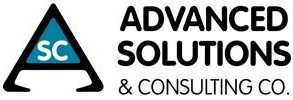The unprecedented challenges brought about by the events of the past few years have placed significant strain on manufacturing companies across the globe, which have had to overstock raw materials, take on increased carrying costs, and reduce liquidity in order to safeguard against supply chain disruptions.
However, despite these ongoing challenges, organizations with modern enterprise resource planning (ERP) software are still finding ways to thrive. With the right manufacturing ERP software at your disposal, you can adopt modern sales and marketing strategies, set the stage for measurable growth, and deliver a great experience to your customers and partners.
Below, in part one of a two-part blog series, we highlight four actionable sales and marketing strategies for manufacturers. In part two, we’ll reveal the final three strategies and tactics that you can weave into your marketing strategy to achieve your growth goals and elevate your resilience.
Reassess Your Product Portfolio
When you shift into survival mode and focus all of your time and resources toward ensuring stock availability, it gets easy to become complacent with your product mix. After all, you likely assume that the last thing that you want to do during a shortage is expand or alter it.
In actuality, however, now is the best time to reassess your product portfolio and ensure that the goods you offer still work to differentiate you from the competition. As part of the reevaluation process, make sure that you invest in research and development to improve your current offerings or test new ones.
Additionally, explore ways to implement new technologies into your business model so that you can regain the edge over your competitors. For instance, you could invest in automated packaging technologies to expedite processing times and get shipments to distributors sooner.
Implement Flexible Pricing Strategies
There are a variety of confounding factors that are currently driving up overhead expenses for manufacturers. Labor shortages, volatile price fluctuations, and inflation have all made it extremely difficult to maintain healthy margins; to overcome these hurdles, you need a flexible pricing strategy that can adapt to such ever-shifting marketing conditions.
As you revamp your pricing strategy, ensure that you are collecting and analyzing relevant cost data, including fuel prices, shipping expenses, and raw material costs. The more data points you include in your assessment, the better your ability will be to adapt to fluctuations.
From there, make sure to keep your vendors, distributors, and other partners in the loop. No one likes surprises, especially when they end up costing money. With that said, being transparent about your flexible pricing practices can minimize friction between you and your customers while ensuring that you maintain healthy margins.
Adopt Service-Centric Pricing for Non-Stock Goods
Make sure to adopt service-centric processes for non-stock goods and give your mid-level management team and sales reps some autonomy to apply discounts. Implementing a fluid discount program can build customer loyalty and boost sales, even if you have to increase prices to keep up with overhead cost changes.
Admittedly, adopting service-centric pricing and rolling out sales-rep-level discount programs can be challenging, especially if you are using antiquated software. Therefore, you should consider upgrading your technology stack with a modern ERP software solution like Acumatica to support the needs of your evolving sales and marketing strategy.
Create Additional Sales Opportunities With Multiple Go-to-Market Plans
Single-channel sales strategies can no longer meet the needs of manufacturing businesses. In response, leading manufacturers now leverage a multifaceted go-to-market strategy to serve clients and drive sales across several different channels simultaneously.
Your organization can do the same to increase sales volume and boost revenue. Some sales strategies that you should consider implementing include a B2B commerce storefront and direct-to-consumer (D2C) sales.
The specific strategies that you implement should be tailored to the unique demands of your vertical. If you manufacture consumer goods, for instance, then working with dropshippers or selling D2C may be a good addition to your existing sales strategy.
Get the Full eBook: Manufacturing Sales & Marketing Strategies
Need more manufacturing sales and marketing strategies for today’s volatile market? Get our Manufacturing Sales & Marketing Strategies eBook today!
You will learn:
- A thorough manufacturing sales and marketing overview broken down by manufacturing industry segment.
- Insights on how to elevate your product portfolio for increased profitability.
- Strategies for improving profits with flexible pricing.
- Tactics on how to utilize Acumatica’s omnichannel platform to expand sales.
- And so much more, including an ERP feature checklist designed for manufacturers.
Click here to download now.
Embrace Modern Sales and Marketing Strategies With Acumatica
Modernizing your sales and marketing strategies all starts with the right ERP software. Learn more about why Acumatica is the ideal software for manufacturers by connecting with Advanced Solutions & Consulting Co. today, and make sure to check out part two of our blog and join us as we explore three more impactful growth strategies. Or watch our Acumatica demo here.
Additional Manufacturing Resources
How to Choose the Best ERP Software for Batch Process Manufacturers

